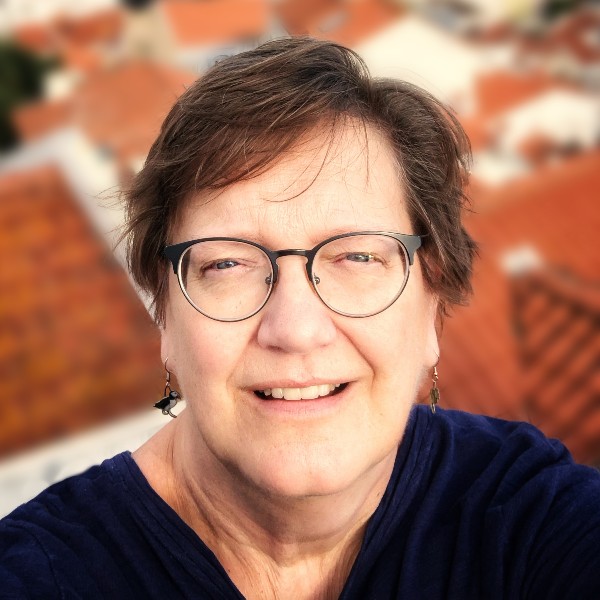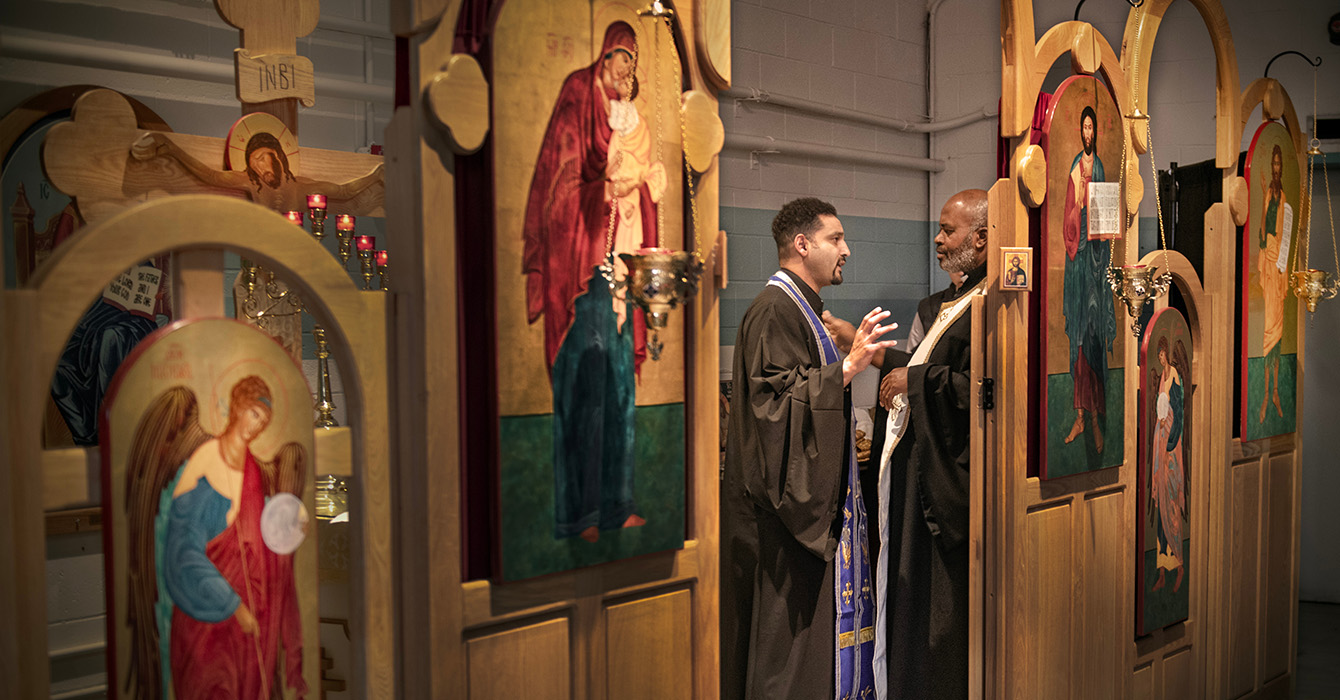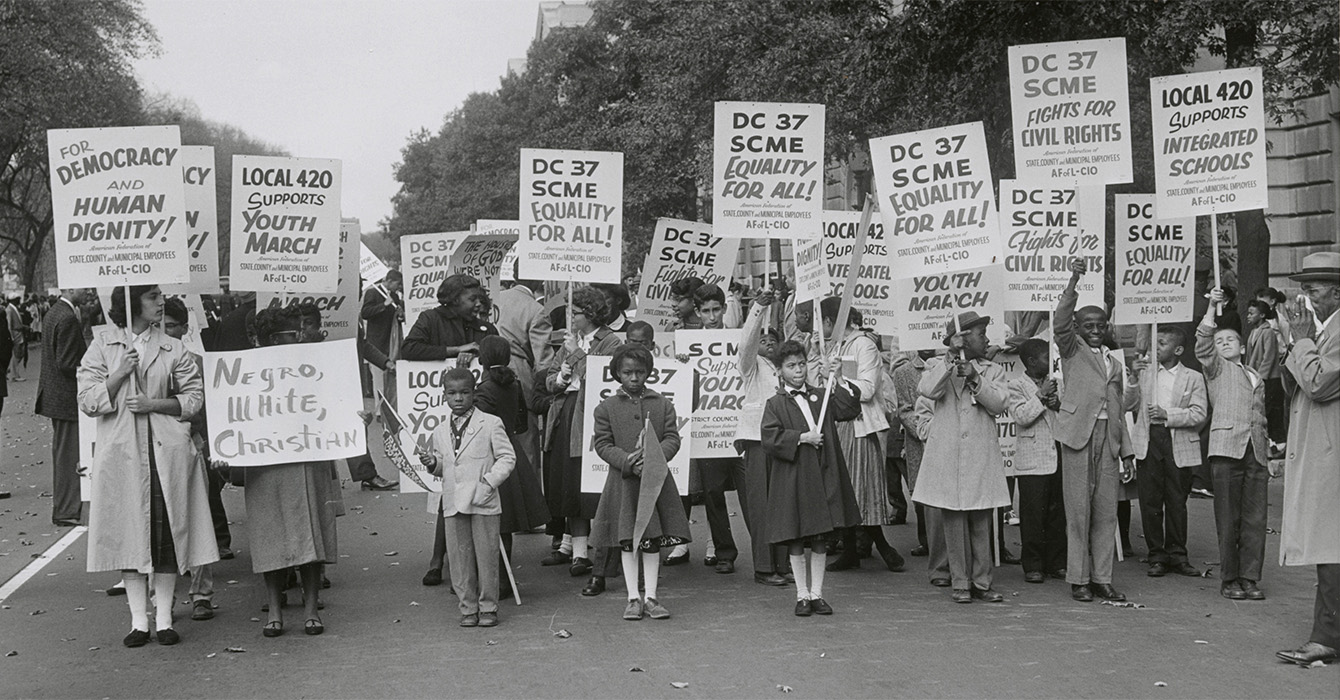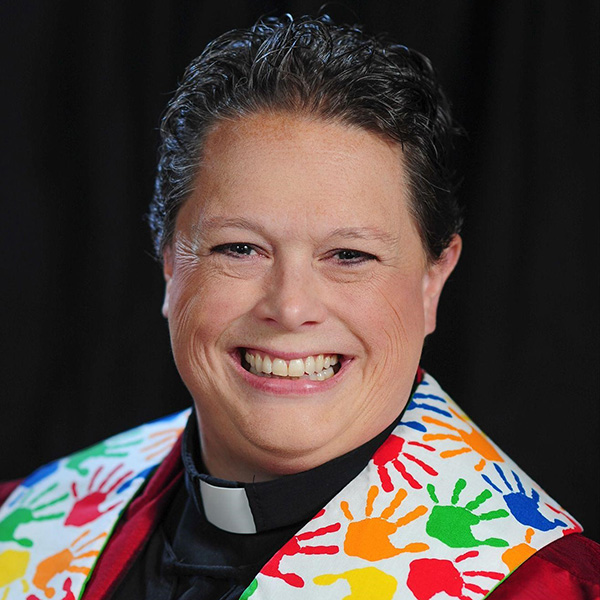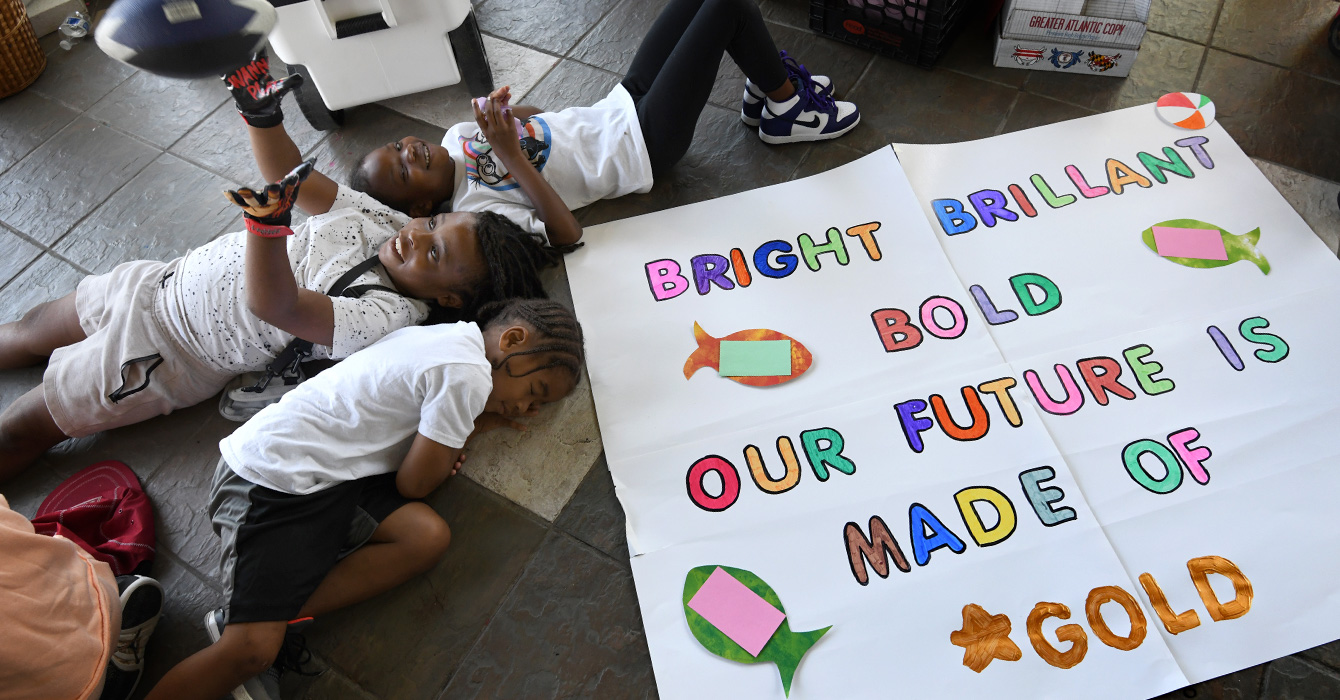Sixty years after the landmark Brown v. Board of Education decision, massive inequities still persist in public education, creating a moral injustice that Christians are called to address, says Nicole Baker Fulgham.
“When you realize that half of the kids in low-income communities don’t graduate from high school,” Fulgham said, “we have to ask ourselves as a nation, as people of faith, do we believe in a God that somehow just gave academic and intellectual potential to kids with more money or kids who are not black or brown?”
 For Christians and other people of faith, the vast differences in public education cannot be allowed to continue, said Fulgham, the founder and president of The Expectations Project. The nonprofit organization mobilizes people of faith to support public education and help eliminate educational inequity in the United States.
For Christians and other people of faith, the vast differences in public education cannot be allowed to continue, said Fulgham, the founder and president of The Expectations Project. The nonprofit organization mobilizes people of faith to support public education and help eliminate educational inequity in the United States.
“From a purely moral standpoint, that’s an injustice that we as people of faith should be acting to eliminate,” she said.
Before launching The Expectations Project in 2011, Fulgham worked for Teach For America for seven years, initially as vice president of training and support and later as vice president of faith community relations.
Fulgham spoke with Faith & Leadership recently about The Expectations Project. The following is an edited transcript.
Q: The mission of The Expectations Project is “to mobilize and equip people of faith to help eliminate inequity in public education.” How do you do that?
We take a local approach. We’re in Washington, D.C., and Indianapolis full time, but have also consulted in four other cities so far.
We identify clergy who are interested in education issues and take folks through our theory of change, which is awareness, action and then advocacy.
The awareness piece is a lot of information sharing, talking about education issues in the context of faith and how it plays out for kids in poorer communities, and making sure that folks understand the problem.
Once awareness grows, we build our network and connect people to how they can take action. So many congregations already volunteer with schools, we try to share best practices.
We build partnerships and encourage our congregations to volunteer through those existing programs. Our theory is that the more involved people are in spending time in a public school system, the better they will be at advocating for systemic change, which is our last component.
It’s one thing to volunteer to tutor kids in preschool, but we can have an even broader impact if we are also advocating for more funding for preschool.
So throughout the process, we educate our clergy on the issues and help them utilize their bully pulpit, meet with decision makers, and mobilize their congregations to take action, to show that the faith community believes this broader systemic change needs to happen.
Q: Your organization describes the academic achievement gap as a moral injustice. How so?
When you look at the way things are in our country, we essentially have two public school systems. We’re 60 years past the Brown v. Board of Education decision, but we still have massive inequities across the lines of race and class.
When you realize that half of the kids in low-income communities don’t graduate from high school -- and even fewer African-American boys -- we have to ask ourselves as a nation, as people of faith, do we believe in a God that somehow just gave academic and intellectual potential to kids with more money or kids who are not black or brown?
Of course not. We look at the Bible, and every faith tradition talks about the inherent potential that we all have. I don’t believe that God distributed that based on race or family income.
So given all that, there is definitely moral injustice at play, because the system we have and the outcomes we’re seeing are very much skewed toward certain groups of kids. For those of us who believe all kids have potential, that can’t stand. We cannot continue to let that happen. From a purely moral standpoint, that’s an injustice that we as people of faith should be acting to eliminate.
Q: How well-positioned are people of faith to help close the achievement gap?
Faith communities have been involved in many social movements. From abolition to civil rights to the current movement for comprehensive immigration reform, we have the ability to capture the nation’s attention when we call out moral injustices.
Some of these movements have been a wonderful array of strange bedfellows among people of faith. They may have different political beliefs or people from different racial backgrounds, but their faith unites them on an issue from a moral standpoint. I think the same potential exists on this issue as well.
Q: How well has the church served that function in recent years, of being an advocate for justice and the public schools?
Many faith communities, whether the African-American church or Catholic social teachings, have deep roots working with public schools or urban schools. Certain populations have done a phenomenal job.
But generally, we are not known for being advocates and champions of eliminating the achievement gap for kids in low-income public schools.
Evangelicals get attention for protesting the lack of prayer or teaching evolution in a public school. If that’s your passion, of course do that.
But we’re looking beyond those issues and trying to ensure that our schools live up to the promise of helping every child reach his or her God-given potential. It would be nice to see the church and the body of Christ known for championing justice and equity for kids whose families have been historically disenfranchised and on the margins.
What a wonderful testament of God’s grace and love and compassion if we can do that. It would be pretty powerful.
Q: The Expectations Project lists innovation and hope as two of its core values. Why those? And what does that mean in practice?
Regarding innovation, this work is new and evolving, and we want to make sure that we can be thoughtful and innovative about how to do it. We’re willing to take risks and try some things. Everything may not work exactly as we had planned, but we’re comfortable with that, and we’re ultimately going to come to the best answer of how to move things forward.
And in terms of hope, anyone who’s working on a social challenge has to have that as a core belief, because the problems can seem daunting. You start to wonder, “How are we going to turn this massive ship?”
As a teacher, I saw the potential that my kids had and how much growth they could make in a year. Growing up in Detroit and knowing that my friends who didn’t graduate from high school were just as smart as I was let me know there’s potential there, and I hold on to that.
Finally, as a faith-based organization, hope drives everything we do. Certainly for me as a leader, there are so many times where you’re wondering, “Is this going to have an impact?” A host of things can tempt you to lose sight, so I hold on to that every day, and our organization has to as well.
Q: How do you maintain and instill hope in the face of such tough, intractable problems?
We are a goal-oriented organization. We have our long-term goals, but we also have benchmarks along the way.
When you’re trying to keep that long-term vision in mind, it’s reassuring to have these benchmarks that you can look to and say, “OK, we may not be at the finish line yet, but it’s mile marker 3, and we’re where we need to be.”
Having benchmarks is definitely a way to continue your motivation. Otherwise, I think I would just get lost in the “Are we ever going to get there?” mindset.
Q: Are there lessons in that for church leaders who may be feeling kind of hopeless about the future of the church?
Despite the fact that lots of studies show that the number of “nones” -- people with no religious affiliation -- is growing, there is a resurgence of people who are committed to seeing the kingdom of God on this earth.
A lot of that passion comes from people who are connecting their faith to education issues or global poverty or health care, people who see their faith as a way to, if not help solve every problem, then to walk alongside people in their challenges.
That sustains people in a surprising way. The more that we’re tapping into that as church leaders, the more likely we will see a resurgence of people engaging in our congregations.
People are longing for meaning in their lives, and the church that connects into these broader issues in a real human way can do that.
Q: How does the project balance the tension between allowing poverty to lower expectations for students and acknowledging the impact that it has on educational outcomes?
The education movement is polarized right now. People say, “Poverty is the biggest issue we have to wrestle with,” and then other folks say, “No, that doesn’t matter; kids can achieve anyway.”
People would never say that poverty has to determine a child’s outcome. I don’t think too many people believe that, but people would say, “Gosh, we absolutely think kids in every community can achieve at high levels.”
But to think that poverty isn’t impacting what’s happening in our schools and in their families -- we’re kidding ourselves. So what do we need to do to set up schools and wraparound services?
The church can help alleviate the pressure and challenges of growing up in poverty, which do impact the ability to succeed in school. There’s a responsibility to do both -- to not lower our expectations but also to realize we’re going to have to do more to support kids in poverty.
It doesn’t mean that we think they can’t learn. We’re just being practical about what we have to do, and it’s doing kids a disservice to say that poverty doesn’t matter. Of course it does.
Does it determine their future? No.
Q: You taught and later worked for Teach For America. How did those experiences influence The Expectations Project?
Certainly, working as a corps member and teaching in Compton, California, is part of why I chose the name Expectations, because that made a huge difference in terms of seeing my kids achieve.
In Compton, I taught fifth-graders who were amazingly smart but on average were reading at the second- or first-grade level.
But by the end of the year, they had accomplished beyond even my expectations of where they could go. Kids who couldn’t read at the beginning of the year were reading chapter books, and their confidence grew tremendously.
Part of what we did in our class was to set the expectation that “You’re going to get there. Failure is not an option.”
It doesn’t mean that everyone got as far along as I wanted, but the mindset that we adopted -- with me, the teacher, but also with our kids, our families, the volunteers from my church -- was not “We’re never going to get there.” It was “We’re going to get there.”
That was a game changer, because it made me work differently, and that continues to fuel my passion and our mindset as an organization.
Working for Teach For America was the best professional development I’ve ever had. It raised my bar for what it means to be a high-functioning nonprofit, and how you need to hire incredibly talented people, have a clear focus on goals, develop a culture that sustains your work and your values -- all those things that Teach For America does very well.
Q: What would success look like for The Expectations Project?
At the local level, we would want to see particular policy changes and the landscape being changed, and we’re working toward that.
We also want to see a significant percentage of congregations actively involved in public schools. We set goals annually to increase that number.
At the national level, we want to see public education equity in the U.S. as one of the top three domestic issues that the church says it should be taking on.
We’re working toward that. I can see a world where we are changing the game for kids in public schools when millions of people of faith say, “We can’t stand for this anymore. We have to make change.”
We need the political and public will to make that change happen, and faith communities can do that. We would consider that a huge success.
Q: Any advice for local congregations on what they should be doing?
They should identify ways to get involved with a low-performing, struggling public school close to them. We encourage people to literally go to the school and ask what they need and how they can help.
On the advocacy front, part of what’s needed is to educate ourselves about where local public schools are on a host of issues that impact kids in poor communities.
Do your local public schools have policies that support teachers and help them with professional development, with rigorous ways to holistically evaluate them and support them? Do your public schools have adequate placements for early childhood education?
Or are there thousands of kids that can’t go to preschool, and start kindergarten behind, because there’s no funding or access?
Ask some of these key questions and build your knowledge and then identify, if this isn’t happening, the decision makers you can ask to make sure it does happen. Numbers matter, so the more people you can get involved, the better.





